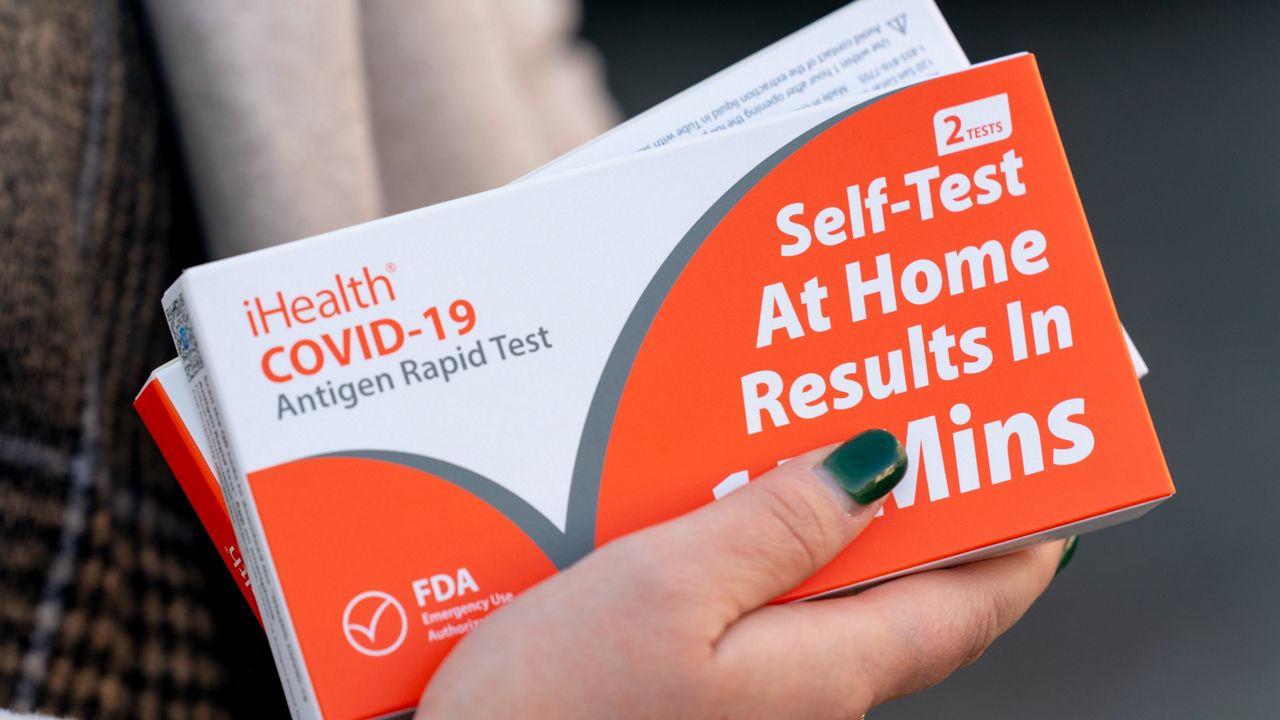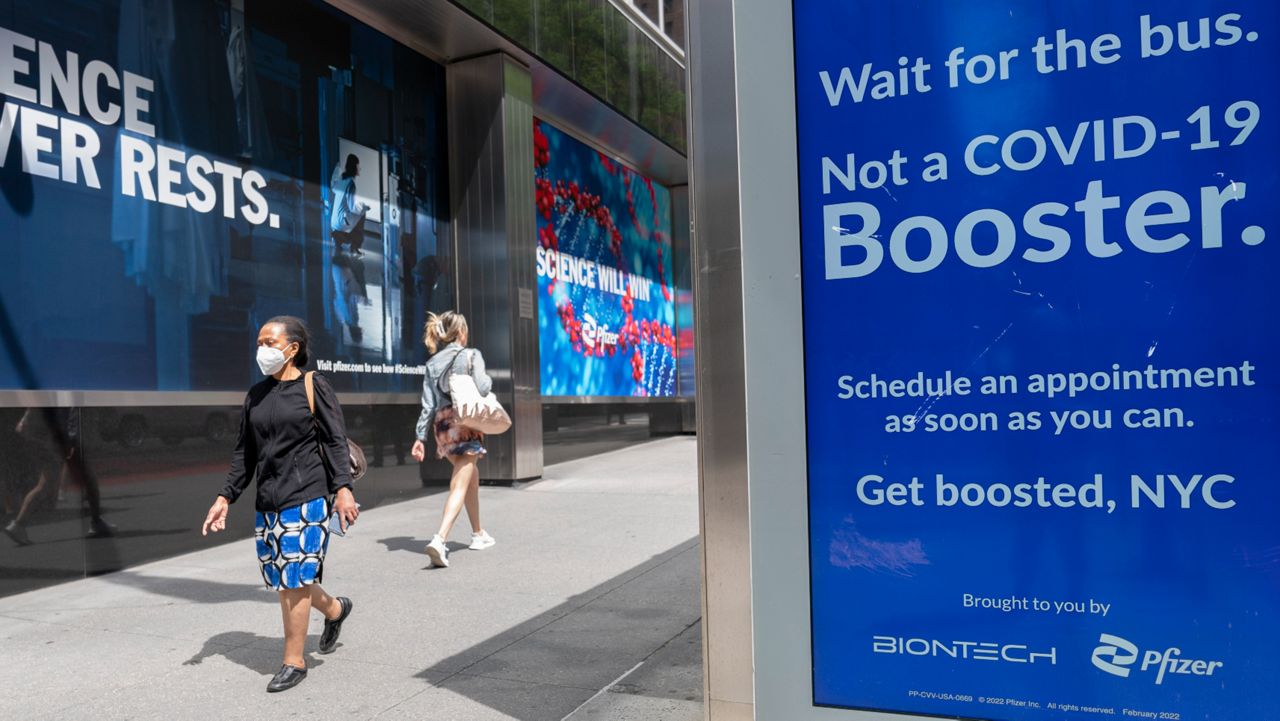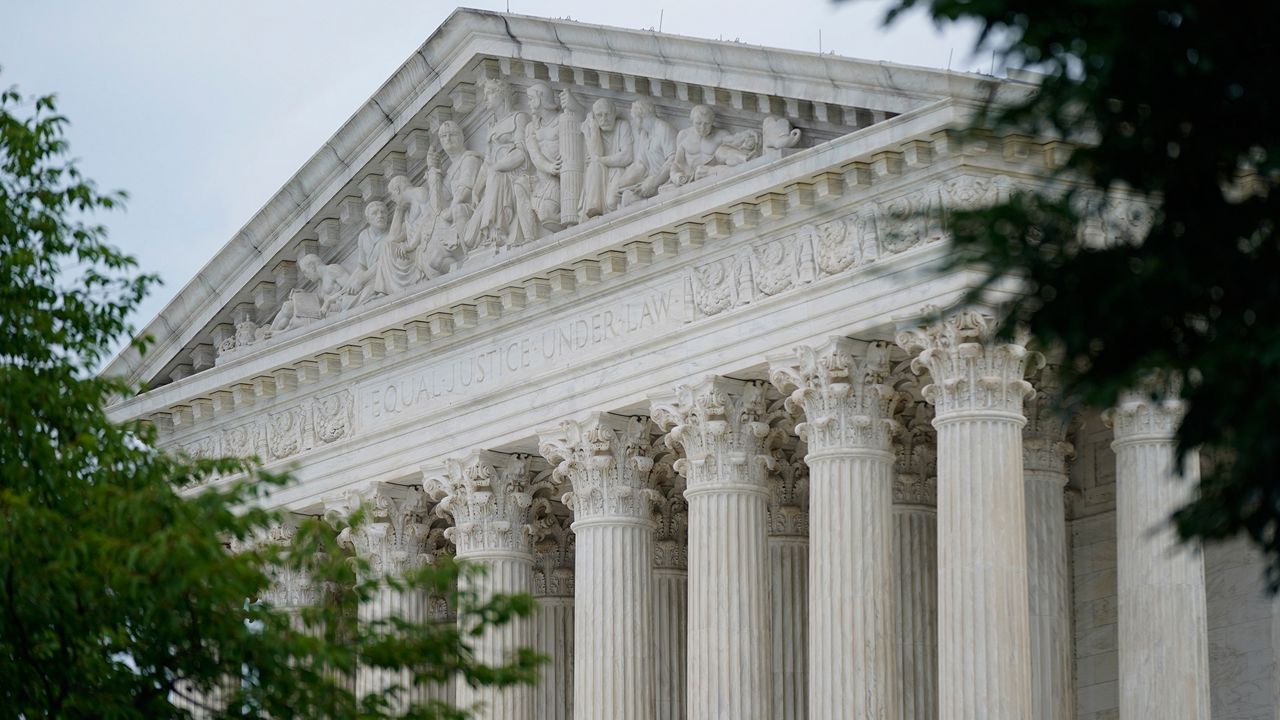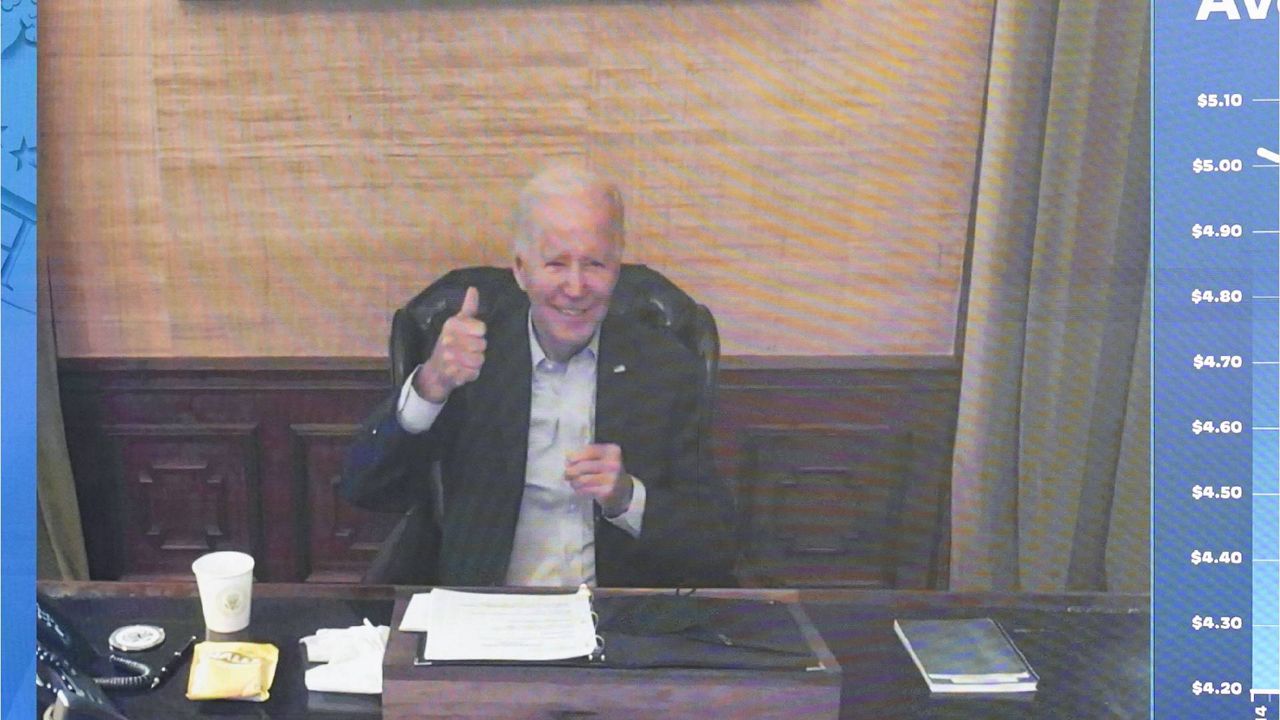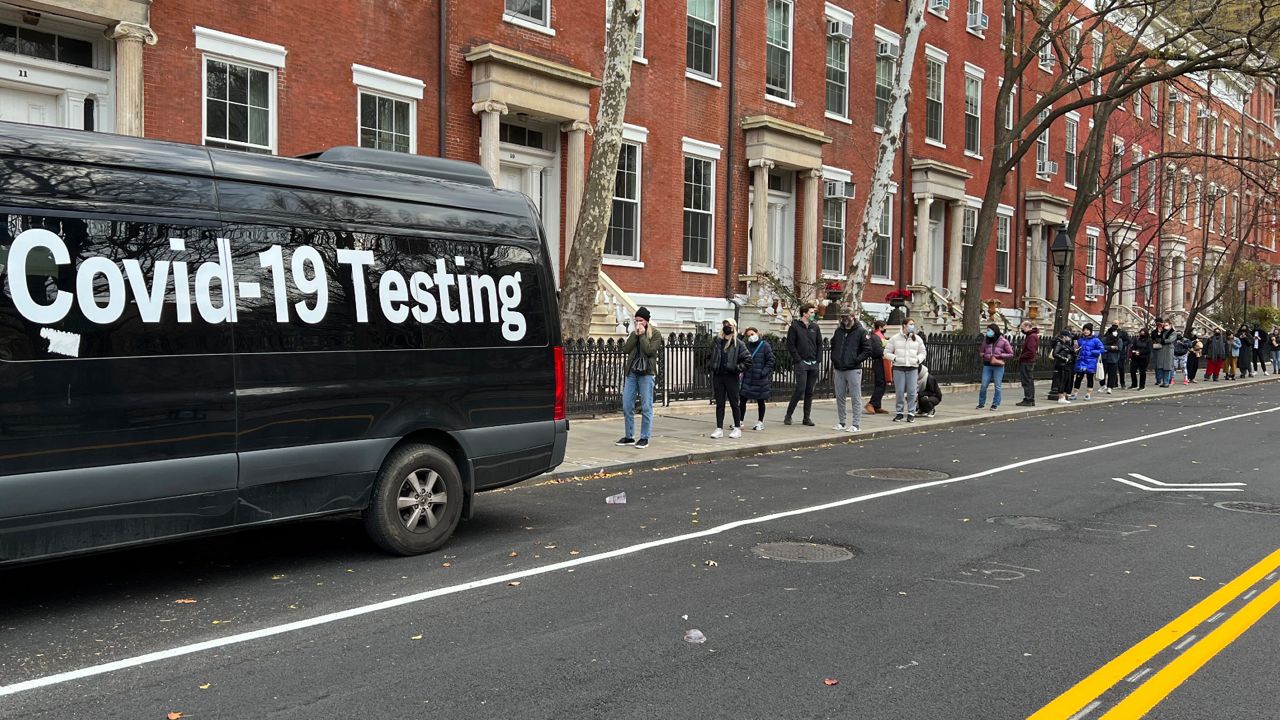Almost every morning, Melody Goodman walks her dog, makes tea and sits down at her desk to run the data.
Goodman, a biostatistician at New York University, pulls files from the city, Johns Hopkins University and The New York Times and puts them through code she wrote herself, trying to get a handle on where we are in the pandemic.
The data, of course, is showing extremely high levels of new COVID-19 cases, and rising hospitalizations, caused by the surging omicron variant — a surge she expected weeks ago.
That data may soon become a little less reliable, however, Goodman says, as the city expands availability of at-home rapid tests, also called antigen tests.
While the city tracks nearly all PCR test results, it receives extremely limited data about the results of the at-home tests, even as it plans to expand their use by tens of thousands of tests each day. There is no app for residents to log the results of their at-home tests. The state does not directly track at-home test results, said a spokesperson for the state Department of Health.
Yet for Goodman and some other health experts, greater availability of at-home tests will be worth the price of having less accurate testing data, especially if it encourages people who test positive on the tests to stay home.
“It will throw a wrench in the type of data we’re able to collect. But everything in public health is a trade-off,” said Goodman, an assistant professor at NYU’s School of Global Public Health. “I’d rather people make that risk assessment and behave accordingly than have great public health data.”
The omicron variant has pushed new positive coronavirus test results to the highest levels seen during the pandemic, sending demand for tests higher and leading to long wait times for PCR tests around the city.
That has driven demand for at-home tests, which are relatively scarce in the city: Anecdotally, you’re sometimes more likely to find the tests at a mom-and-pop pharmacy than at a chain store, and city-run vans that hand out at-home tests are dogged by long lines and limited supply.
But the city is quickly expanding availability of the tests, especially for public school students. On Tuesday, Gov. Kathy Hochul announced it would be providing the city with 3.5 million tests, which will be used by people in classrooms where someone has tested positive for the coronavirus.
Over the past two weeks, the city’s Test and Trace program has distributed more than 75,000 at-home test kits per day, according to Adam Shrier, the press secretary for the program. Test kits typically contain two tests.
Last week, Dr. Ted Long, who runs Test and Trace, said that at-home tests could soon put the city’s overall testing capacity from public and private sites at more than 200,000 tests per day, up from about 150,000 now.
The city does not record who receives the test kits it is distributing, or where the kits are distributed, Shrier said. If a person records a positive result with an at-home test, they can contact the Test and Trace corps for further resources, such as a hotel room to isolate them from family or roommates, but the result is not used for contact tracing.
Shrier said that increasing at-home test availability allows New Yorkers to quickly break chains of coronavirus transmission.
“Our COVID-19 data are for surveillance purposes and we collect enough information to give us a solid indication of how COVID-19 is spreading around the city,” Shrier said. “This is true even with the proliferation of at-home testing. We have never been able to identify each and every case of COVID-19 since those who are asymptomatic might not get tested.”
Yet some epidemiologists are concerned the increasing use of at-home tests will make the virus’ spread something of a black box, potentially hampering their ability to track where the virus is going.
“One of the continuing problems of this pandemic is that we've been playing catch up to infections as they happen,” said Dr. Bruce Y. Lee, a professor of health policy at the CUNY School of Public Health. “What you want to do is get ahead of the virus. But this will potentially make this worse.”
Without an infrastructure for tracking at-home tests, the city will have a poorer idea of where infections are increasing around the boroughs, Lee said. Contact tracing for a positive test won’t happen for positives the city doesn’t know about, he added.
Lee said he is concerned that this could exacerbate existing inequities in health access that the pandemic has exposed.
“You might not have people getting diagnosed early enough, or proper treatment early enough, and once they’re seen they could have a worse case of COVID-19 by then,” he said.
Yet increasing the supply of at-home tests will have other benefits, said Dr. Nathaniel Hupert, a physician and public health researcher at Weill Cornell Medical College.
Hupert is currently on sabbatical in the United Kingdom, where until recently at-home tests were plentiful — and free. He said was surprised to find just how liberating and relieving it was to have virtually unlimited access to tests, even though the at-home tests are less accurate than PCRs.
“You’re taking a tremendous psychological toll off of yourself, your family, your friends,” Hupert said. “It radically changes every interaction when you feel you've done something to prevent you from being the spreader.”
Hupert said that the idea of plentiful at-home tests is something of a challenge to traditional methods of public health research, which rely on widespread reporting of test results for surveillance of infections in the population. It may be, he said, that foregoing a more accurate picture of infections in exchange for broader peace of mind among citizens is a worthy trade-off.
Imagine, he said, how much simpler life in New York City would feel now — relatively — if you could quickly determine whether your sniffles were just that, and not COVID-19, without blocking out your afternoon to stand on line in the cold for a nose swab.
“I've witnessed myself, by being in a country that went all in, to the tunes of billions and billions of pounds, it really changes how you feel about your ability to conduct life in a pandemic,” he said.
And either way, Goodman and Hupert said, our existing data picture is already flawed, since no level of government does the kind of proactive, random testing of the population that would give a truly accurate picture of infection levels.
“We’re not flying blind, but we're looking in the rearview mirror of our car with the windshield blacked out,” Hupert said, borrowing a metaphor from the Cornell University engineering professor John Muckstadt.
Indeed, the unreliability of test positivity as a metric for monitoring the spread of the coronavirus is what led Mayor Bill de Blasio to stop using it as a key piece of pandemic decision making in August. At that time, overall test numbers were decreasing, reducing the accuracy of the metric.
Yet Goodman believes that test positivity will continue to be an important metric for the city and health experts to monitor, since she doesn’t see PCR tests going away any time soon.
She underscored that at-home tests should be considered as just another “layer” of COVID-19 protection, alongside PCR tests, masking, social distancing and vaccination.
“This is an additional tool in our tool box, and COVID is something that requires more than just a hammer and a screwdriver,” she said.
Goodman said the city, or an academic research institution should consider beginning work on an app that residents could report their at-home test results through. Even though the omicron spike will likely end in the coming weeks, we will need it for the next variant, she said.
“We’re going to be living with COVID,” she said. “We need to be thinking about how do we live with it.”




